Kawasaki 2017 650cc LAMS machines reviewed
Motorcycle Test by Kris Hodgson, Images by Nick Wood
Kawasaki recently updated their premium LAMS offerings with the 2017 Ninja 650L and Z650L, shedding weight, improving styling and offering a more refined ride. The move signals a greater commitment to what is arguably the strongest segments in Australia.

The previous Ninja 650L was no slouch, but in many ways the LAMS category, particularly on the premium end, is as competitive as the highest performance sportsbikes, with performance, specifications, looks and indeed price, all playing an important role in their pitch for new rider’s wallets.
Of course providing exceptional premium LAMS options makes sense in many ways: you’re identifying riders willing to spend more on their machine; creating a bond between rider and manufacturer that may well last a lifetime; and naturally get to bask in the praise and word of mouth from rider’s who consider their bike the ‘Best LAMS machine available’.
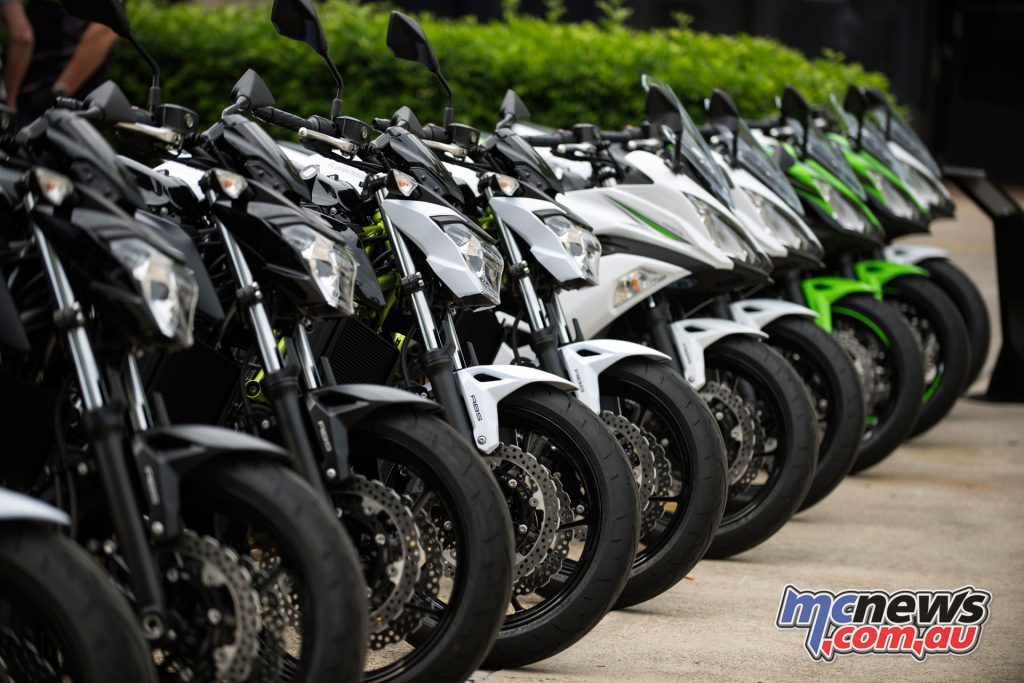
Purely from a looks perspective the Z650L and Ninja 650L are quite impressive, with the Z650 taking obvious styling cues from the Z1000 and Z800. Angular, futuristic lines, belly mounted exhaust, exposed trellis frame and strong attention paid to a quality finish all stand out.
The Ninja 650L on the other hand takes after the ZX-6R and ZX-10R and will appeal to those after a LAMS sportsbike, without having to resort to the smaller capacity options, and was my personal favourite of the two when it came to looks alone, especially in the KRT colour scheme.
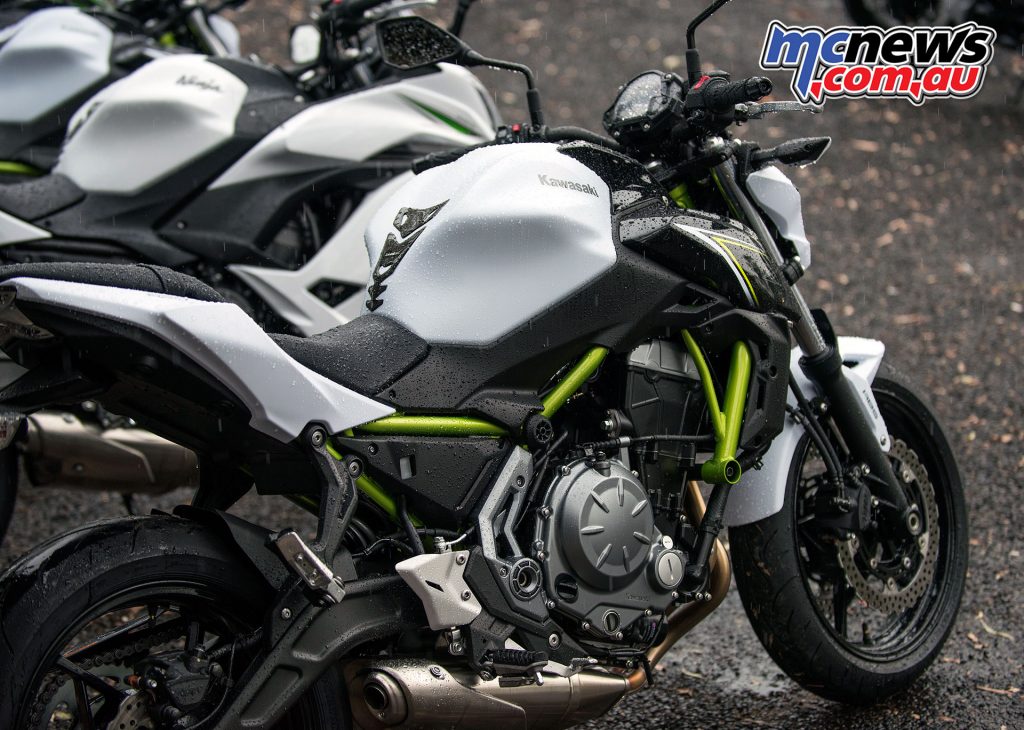
On paper the Z650L and Ninja 650L have very little to tell them apart specification-wise, except for a slight weight difference due to the fairings on the Ninja, individual instrumentations and the obvious styling differences between a naked and faired bike.
With that said, I did feel a slight difference between two on the day. I spent the first half of the day on the Ninja 650L, so I’ll start with this offering and then outline my observations on the Z650L, where they differ.
2017 Kawasaki Ninja 650
The 790mm seat height gives an easy reach to the ground for my 180cm height. In fact, it is a machine on which I found myself consistently surprised to find my feet touching the ground so quickly and easily, this is largely due to the thin seat, and narrow area between your legs. It’s important to note here, that seat height is really just a number, and the same seat height can feel vastly different, on differing machines.
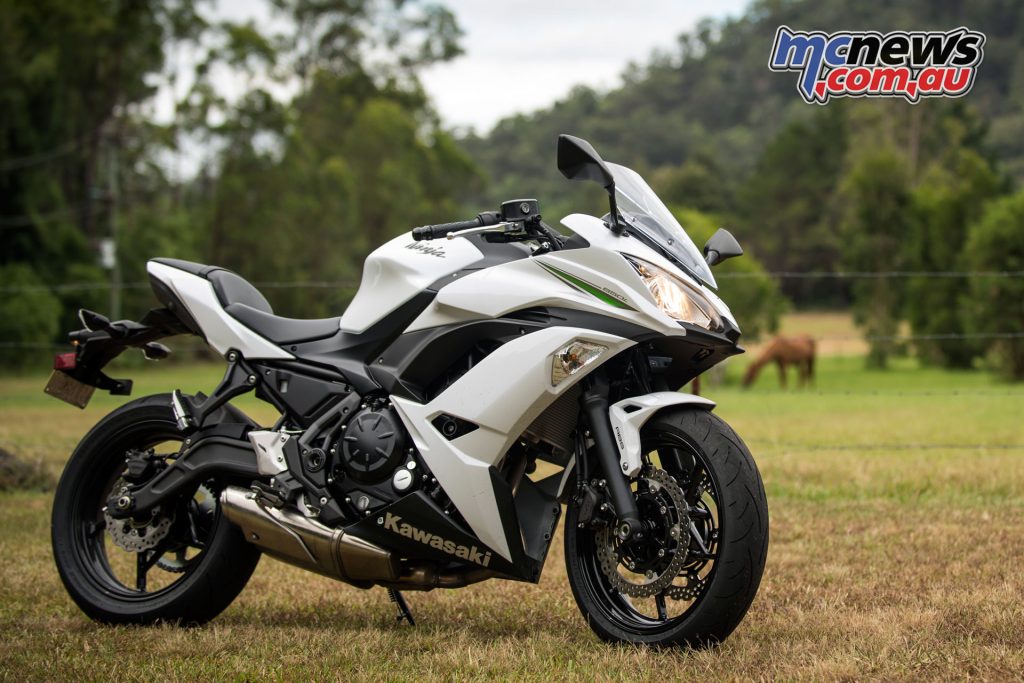
The ‘pegs are simple items with rubber grips and provided a roomy position for my legs, combined with an easy and natural reach to the ‘bars. It’s not a full supersport racer position, but keeps the rider upright and in a more neutral stance, with the ‘bars raised off the top triple.
Ideal for learner riders, or those looking for a more comfortable all-rounder, the Ninja 650L does not threaten at low speeds while using plenty of steering lock. Mirrors offer good vision, with plenty of adjustability and front indicators are incorporated into the fairings. Instrumentation includes a digital read out, analogue tachometer and gear position.
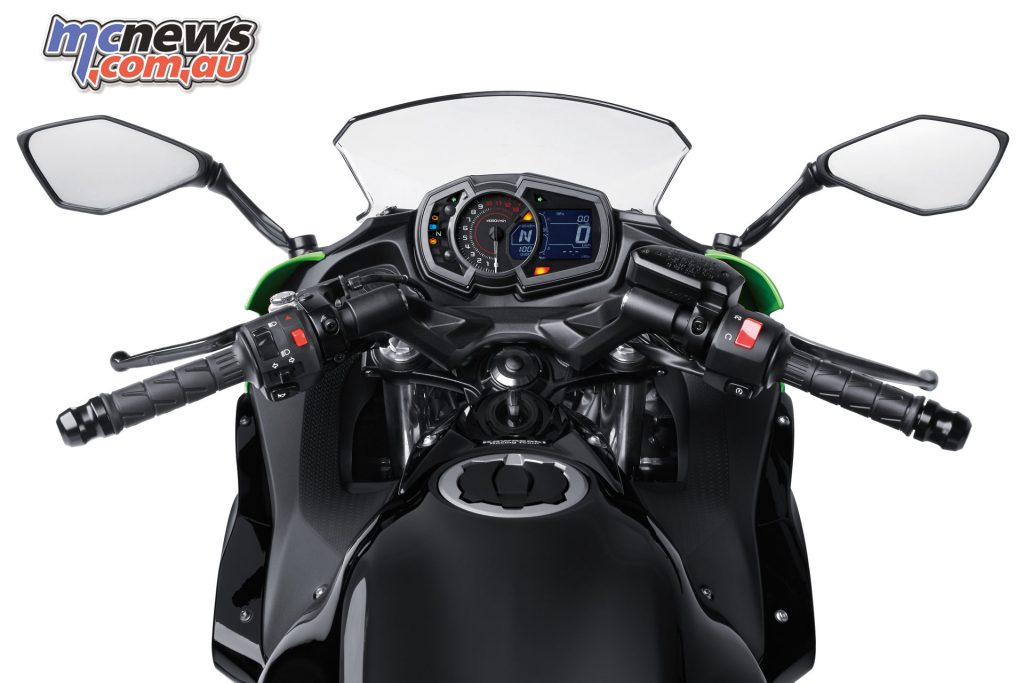
Indicator warning lights are situated on the top of the dash, the positioning makes it easy to see them without having to look down. This is essential on any motorcycle in the LAMS category in my opinion. The adjustable screen and adjustable levers also ensure a larger variety of rider sizes and preferences are catered for.
Kawasaki claim both bikes have been specifically tuned for mid-range, meaning that power and torque are available where they are needed most on the road, and that’s instantly noticeable when setting off.
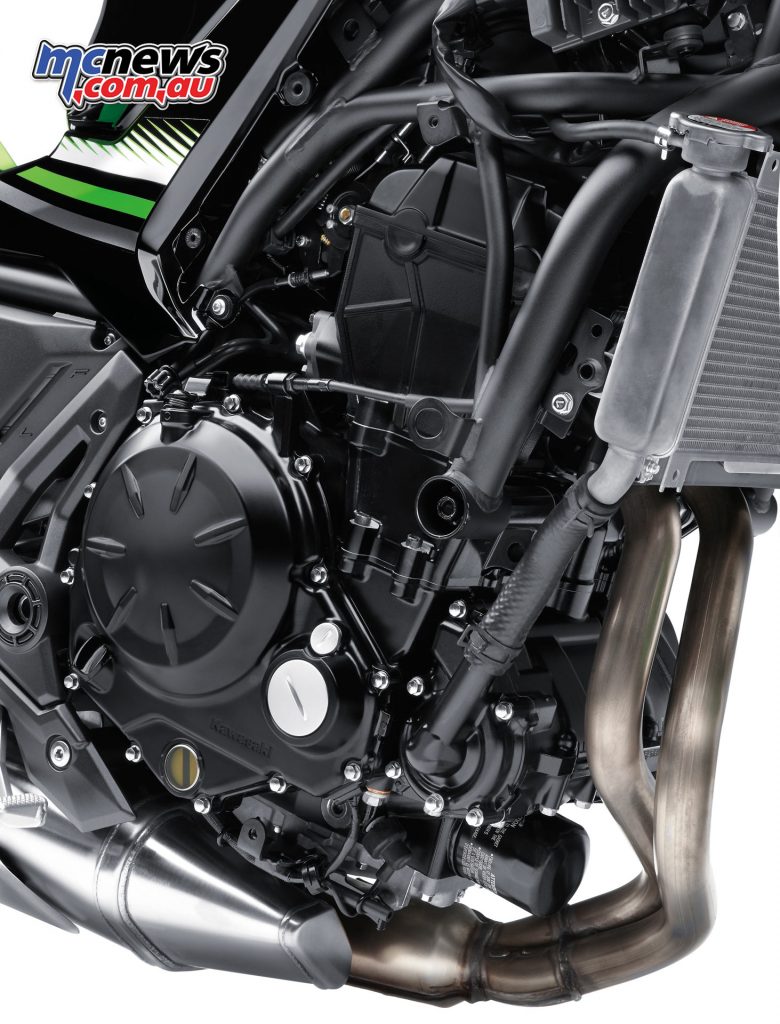
The Ninja 650L is grunty, with gear ratios that don’t necessitate constant upshifting, but never-the-less does allow for quite a lazy approach to gearing. Strong power from down low makes for an easy take-off and while revving the parallel twin engine is rewarding, it’s all about the mid-range grunt. A slipper clutch helps ensure smooth deceleration.
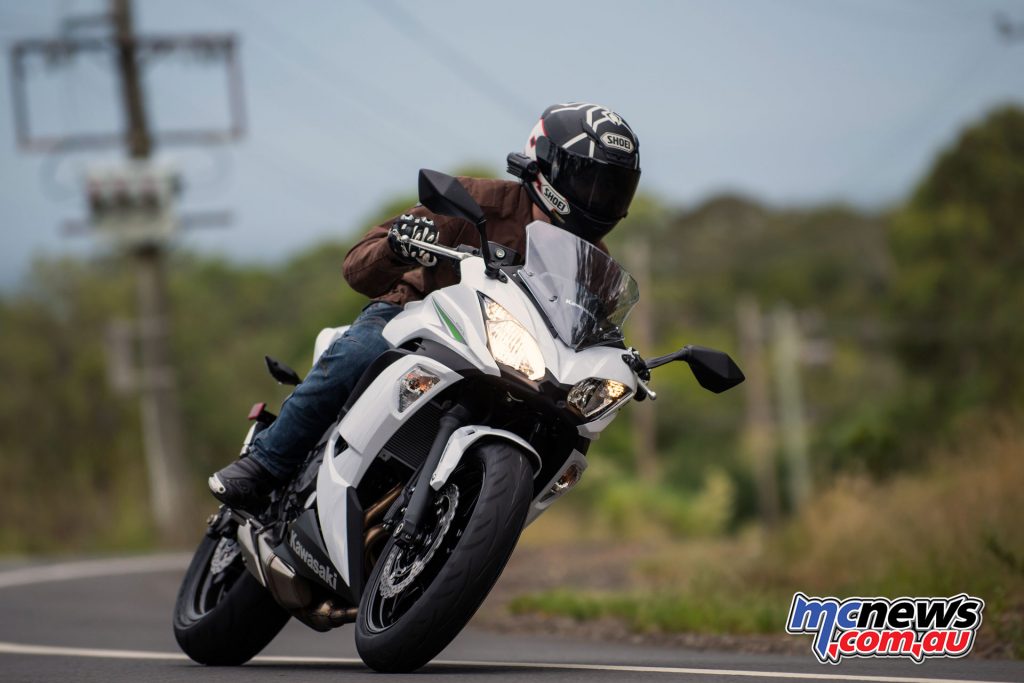
The previous ER-6N/Ninja 650 had a fuelling quirk on a steady or slightly closed throttle in some circumstances, where the fuelling would basically taper off and create unwanted deceleration. Never an issue for sporty riding, however it could be annoying in suburban situations. On the 2017 model the revised fuelling has greatly reduced the problem. I only noticed it a couple of times in the lower gears. With slightly more aggressive riding and throttle use however it wasn’t an issue.
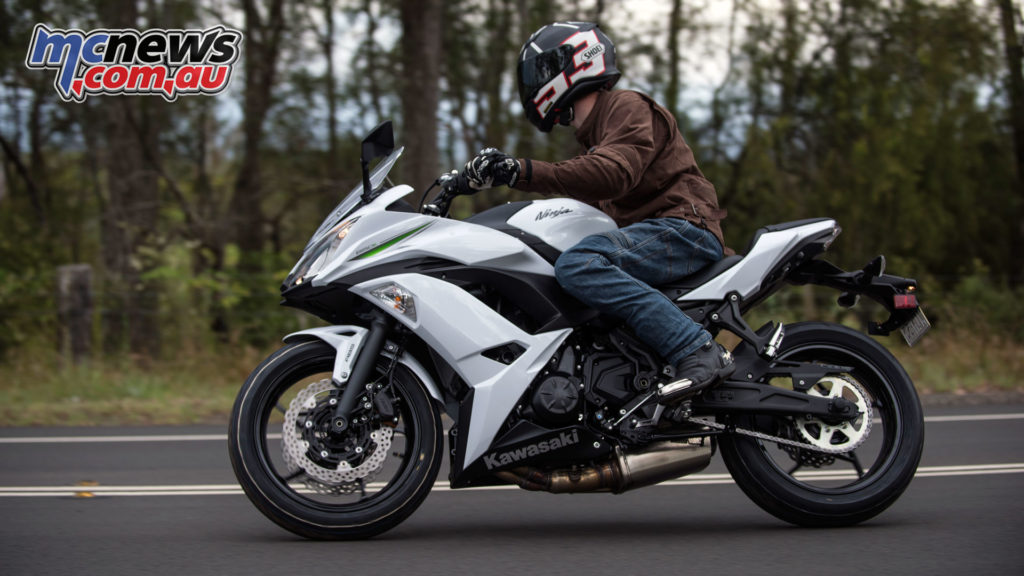
Out of the suburbs the Ninja 650 is a hoot, with a torquey low and mid-range delivery that ensures taking off gets the heart racing and there’s plenty of acceleration for punching out of corners. There’s no danger of even coming close to running out of puff at anything resembling legal speeds, which also translates into plenty of overtaking ability.
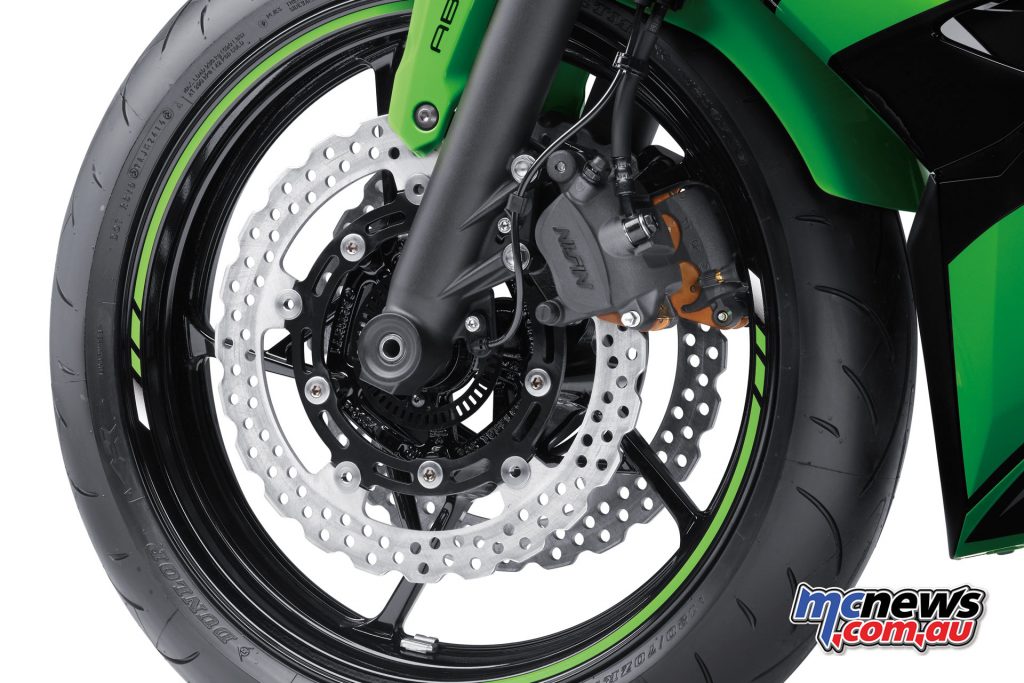
Dual-piston front calipers with a pair of petal discs offer strong performance, but in a manner that’ll keep the inexperienced in control, while still rewarding those with high expectations. Bite is gentle, with great modulation and progressive braking performance. You could beef up the bite with a different set of pads, but it’s probably unnecessary. ABS offers additional safety and is standard fitment.
Can you do without ABS? Of course, but if you’re a learner or ride in all conditions it’s a simple addition that’ll pay for itself if it prevents one incident. For a learner or the inexperienced that’s a great feature to be able to fall back on.
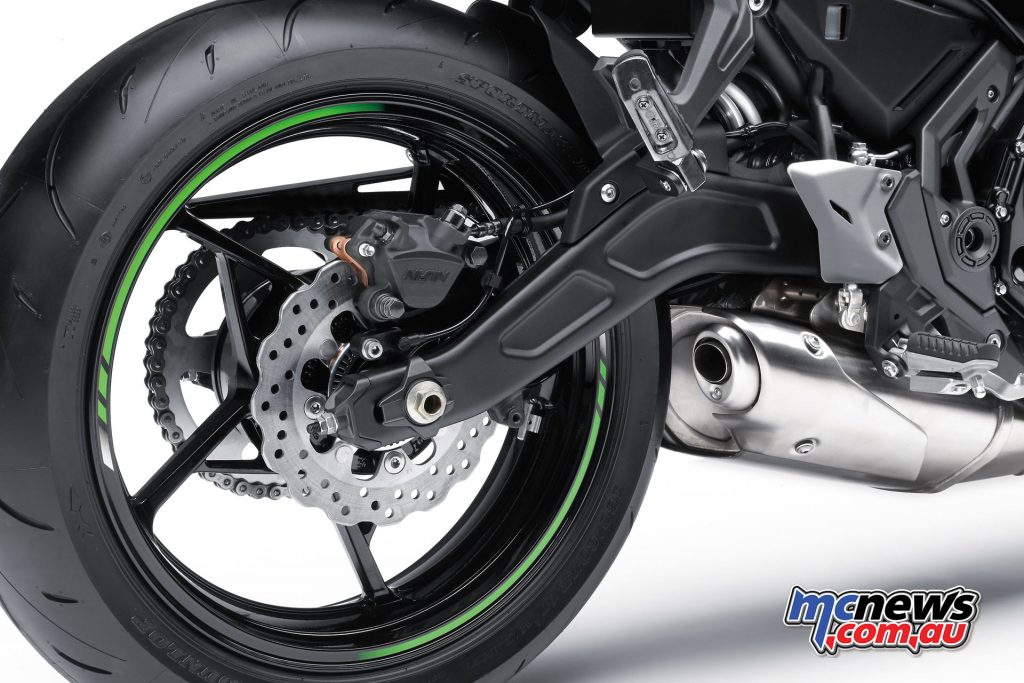
The rear brake offers enough bite and power for slow speed stopping, but is mainly ideal for stabilising the bike or minor speed or line corrections mid-corners.
Standard rubber is a set of Dunlop Sportmax D214s which were great in the dry but not as impressive by my standards in the wet. They handled the often wet conditions of the launch but I’m probably spoilt by the sports-touring tyres I normally ride on.
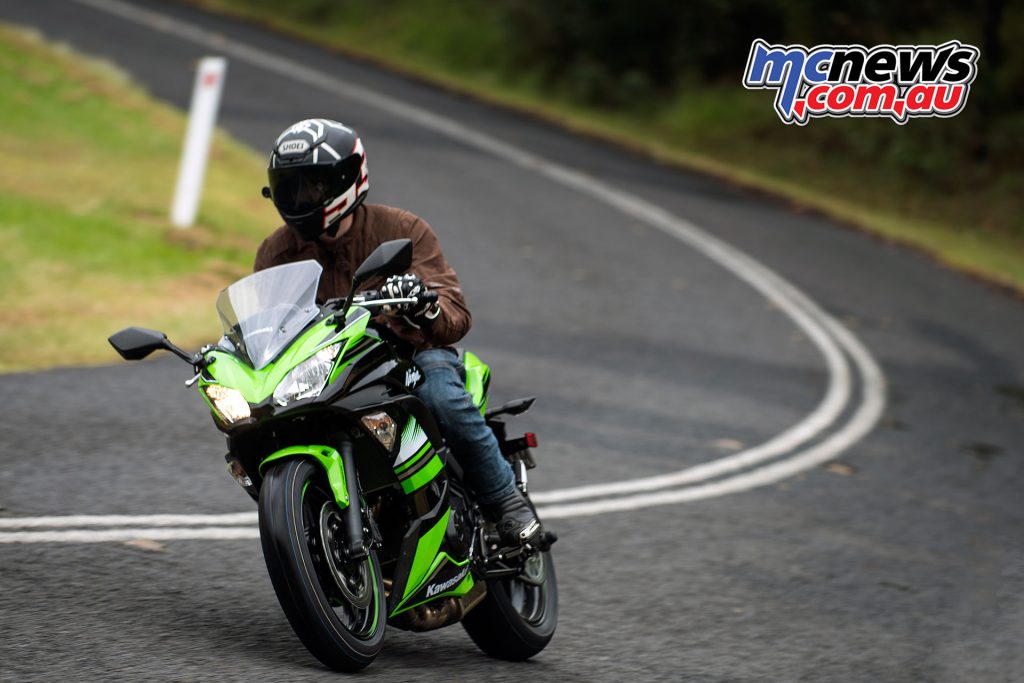
Through the city, the suspension was firm enough to feel sporty while still offering a fairly comfortable ride. Great front end feel and confidence on the open road the highlight.
Without making adjustments from standard preload, the rear shock was perhaps a little on the stiff side, struggling over poor surfaces mid-corner. That’s not unique to this price-point, in fact it’s very common.
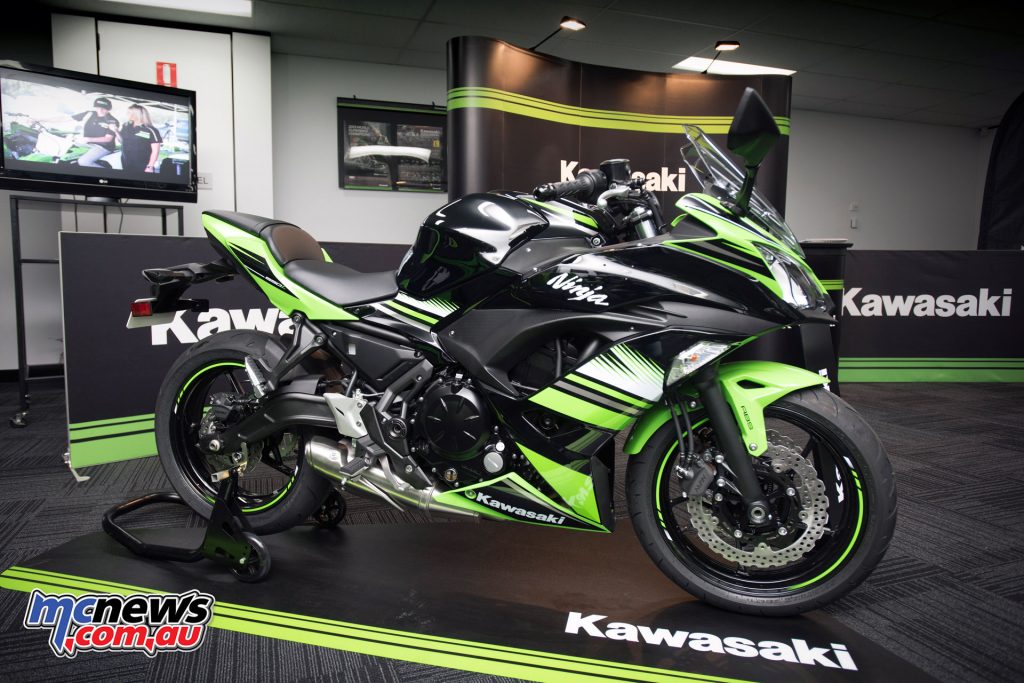
Through the smoother tarmac the Ninja 650 was a hoot, feeling stable, with predictable steering and an easy ability to pick your line and follow through, with room for adjustment where necessary.
2017 Kawasaki Z650
After a half day on the Ninja 650 the Z650 was quite a shock. Despite no real difference on paper, the slightly different seating position due to the handlebars actually create a unique riding experience between the two machines. We later found out that the rake and trail between the two machines are indeed different, with the Z650 featuring half a degree less rake with 24° instead of 24.5°, and 10mm less trail at 100mm (110mm for the Ninja 650).
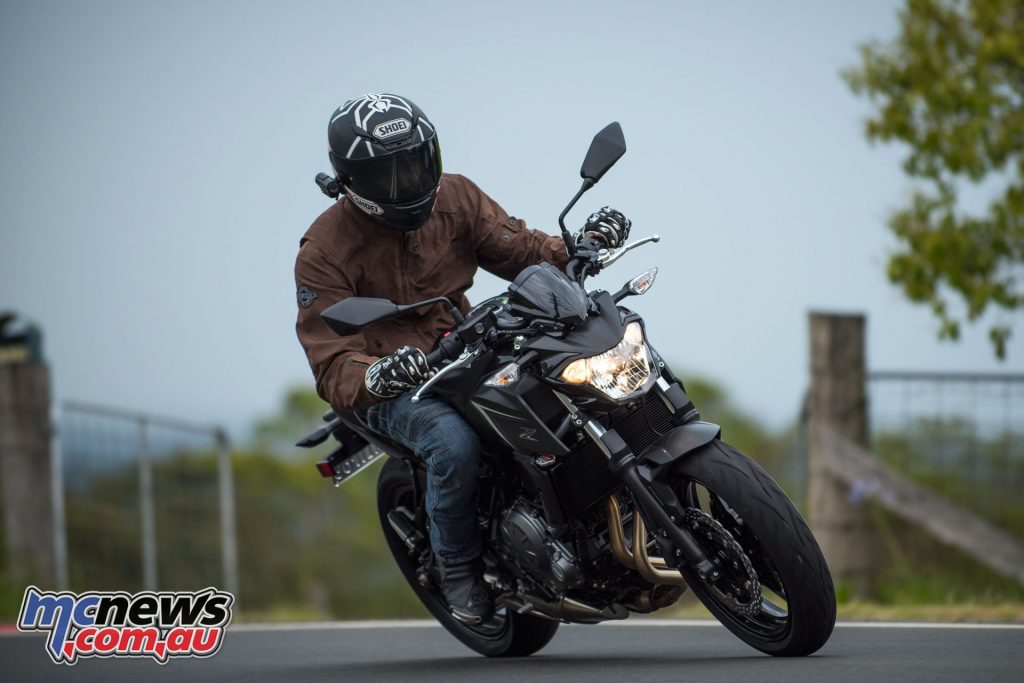
The Z650 immediately feels much faster steering, more nimble and much more like a streetfighter. It actually took me the first five-minutes of riding to acquaint myself with the very different riding style. This can probably be partially attributed to the slight reduction in rake on the Z650L, as well as a slight reduction in trail.
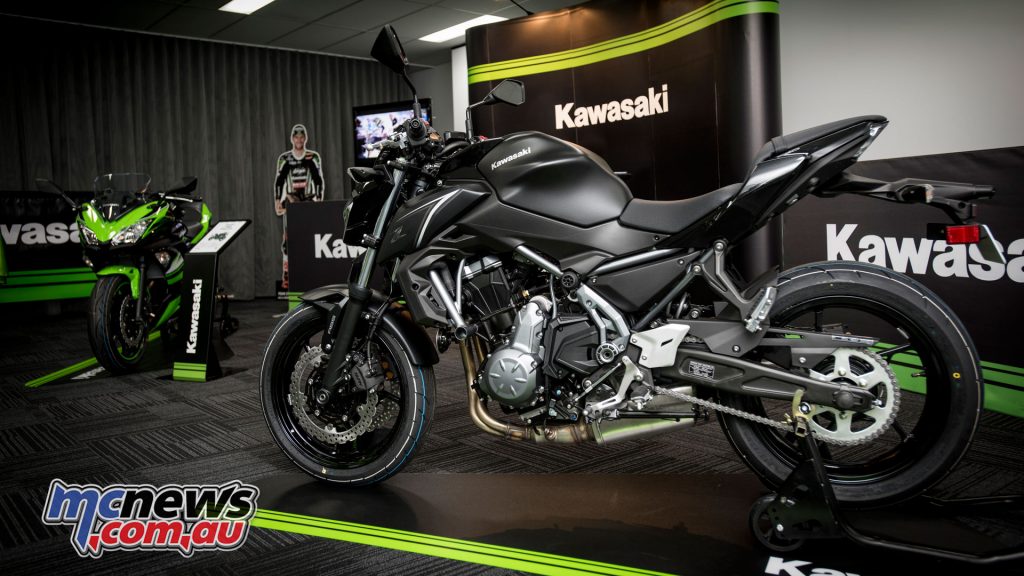
While the punchy parallel twin powerplant remains the same, as does the suspension and brakes, there’s enough of a distinction between the two models that it’s worth test riding both if you don’t have your heart set on a specific style – either nakedbike or faired.
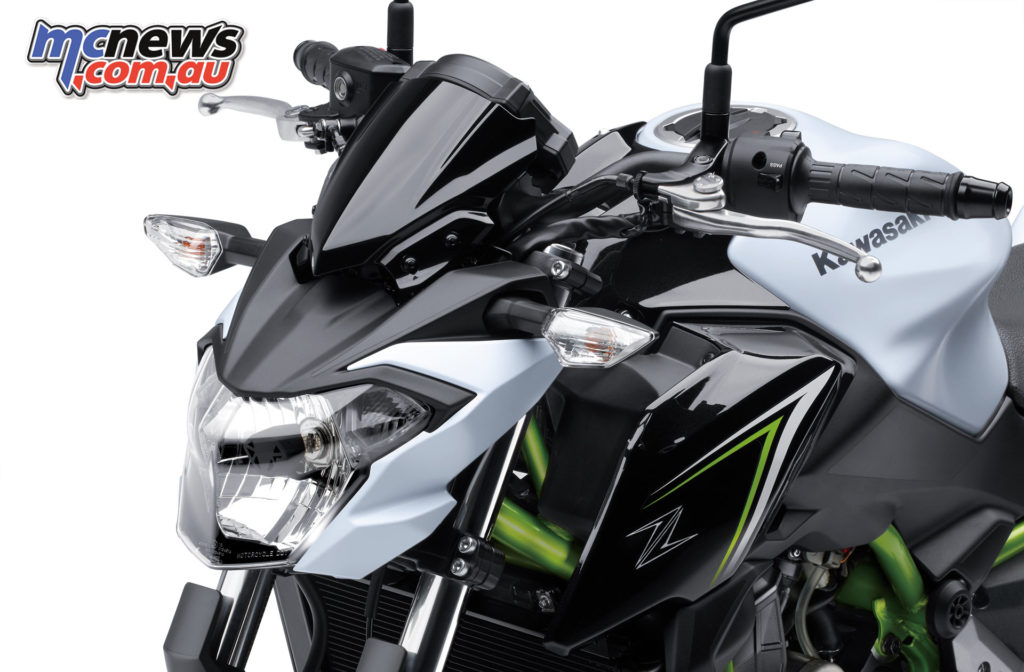
The Z650 is a great streetfighter themed nakedbike, with the trellis frame exposed and an aggressive headlight. It’s not really the full Z-series styling like the Z800 or Z1000, or even the Z900, and seems to have that more extreme styling moderated to suit a wider audience, which is probably a smart move from a sales perspective.
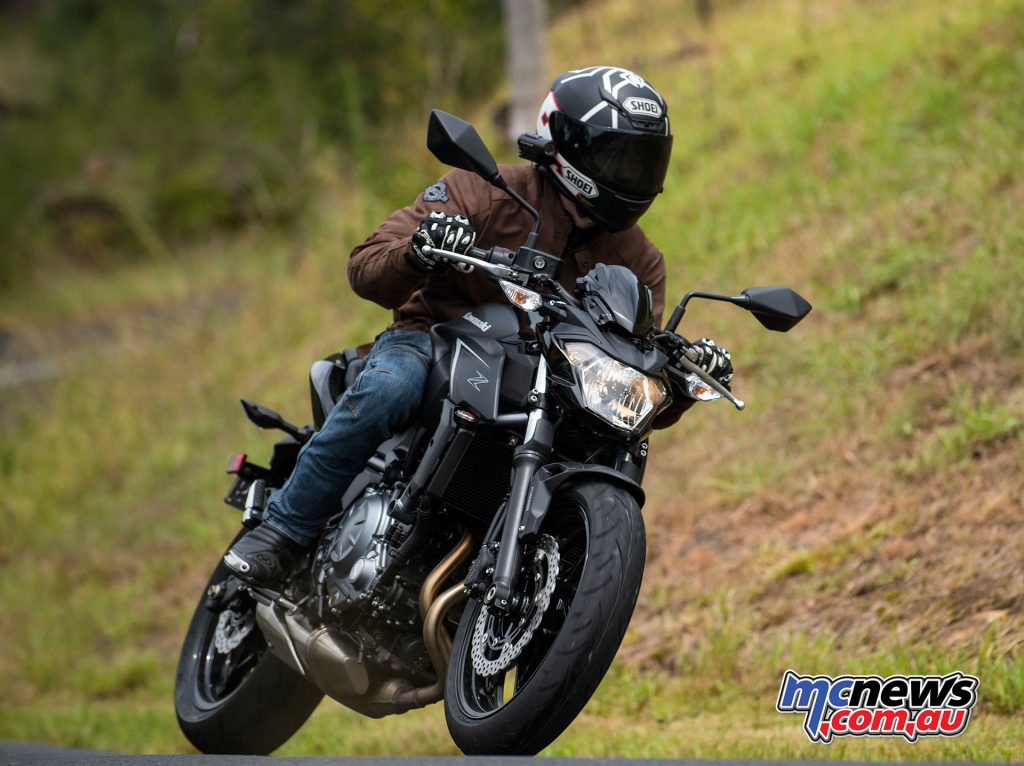
The Z650 also initially felt more flighty than the Ninja 650 through the sweepers, but as the kilometres sped by I was quickly able to appreciate that nimble handling to swathe through the twisties and really enjoyed the experience. It’s much more the hoon machine than the Ninja, both out on the faster open roads, and in the suburbs.
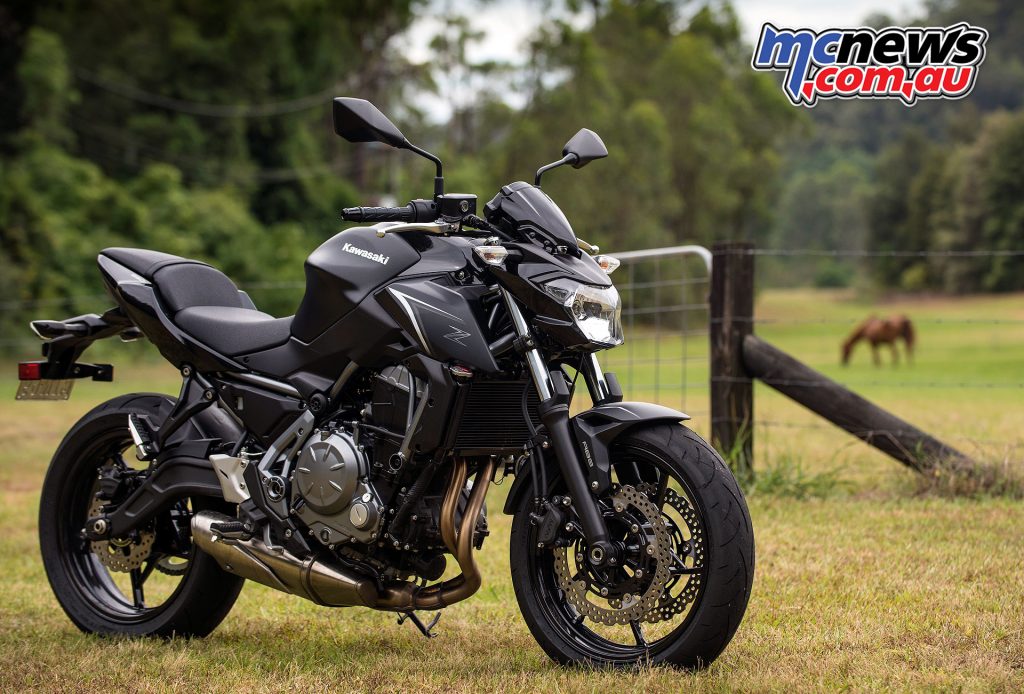
You get the full nakedbike enjoyment on Z650 and it really lives up to the spirit of a stripped back machine. I’d say it’s a little more aggressive than the Ninja 650 overall, so I think it’ll offer extra thrills, but not have quite the same easy going stability that the Ninja 650L gave. That’s not a criticism either, just slightly different characters.
Conclusion
Kawasaki’s Ninja 650 and Z650 are definitely an improvement on their previous larger capacity LAMS offerings, with stronger performance, better handling and a very competitive overall package.
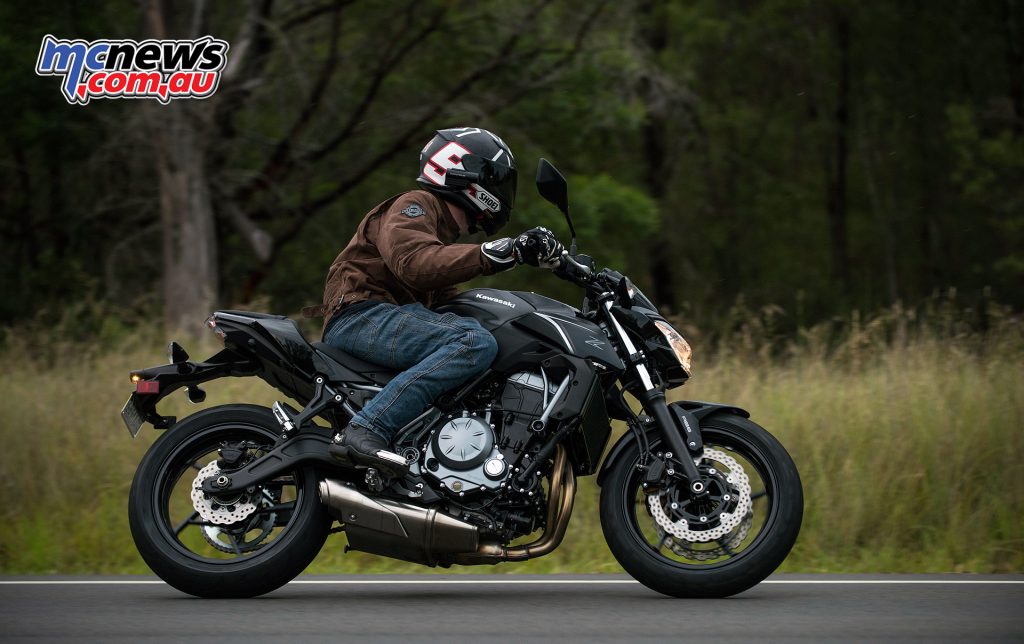
Both are undeniably strong competition at this price-point, which while not the most expensive of the LAMS offerings, provides 600cc performance – albeit restricted, a larger LAMS machine and more premium features. It’s the sweet point if you ask me, an obvious upgrade from the 300cc machines, but not quite up there with the most expensive LAMS offerings.
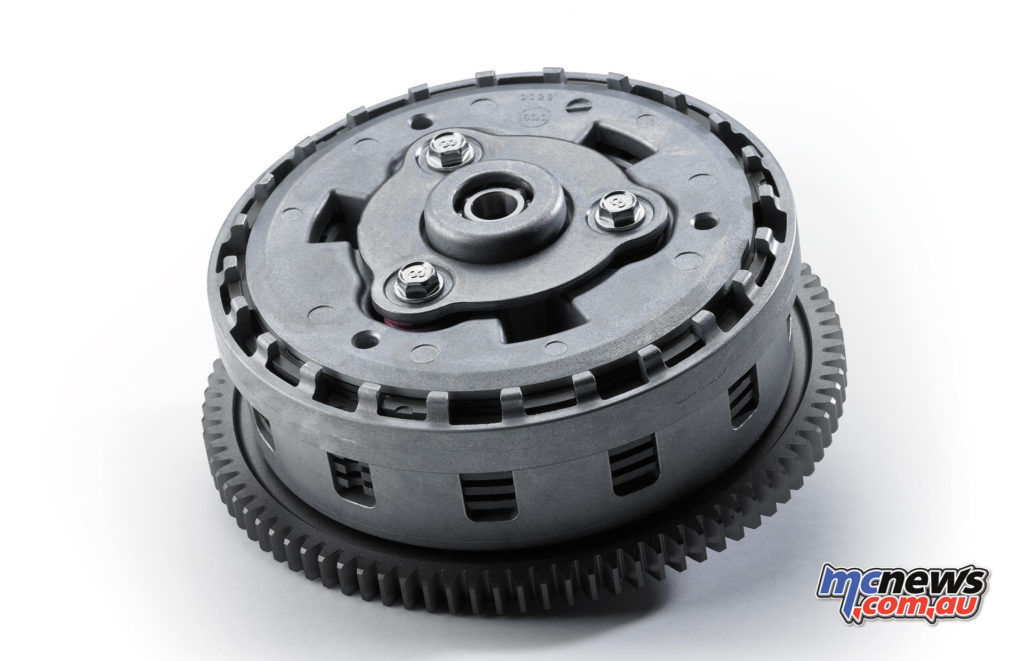
If you’re used to an unrestricted 600cc machine you will notice the performance deficit, mostly in acceleration at higher, less legal speeds, but that’s missing the point of these LAMS compliant machines. They are designed to be ideal entry points to motorcycling and do so with style, and one could easily continue riding one of these machines well past your Ls or Ps.

They look great, offer fun and exciting performance and are hard to fault in any area, only really let down by the rear shock, which is an incredibly common issue if you fall outside the manufacturer’s envisaged rider weight.
Both the Ninja 650 and Z650 are also on the quiet side, but the underbelly exhaust is well integrated into the machine and ensures the weight won’t be felt. There’s no ugly massive muffler, which is another boon.
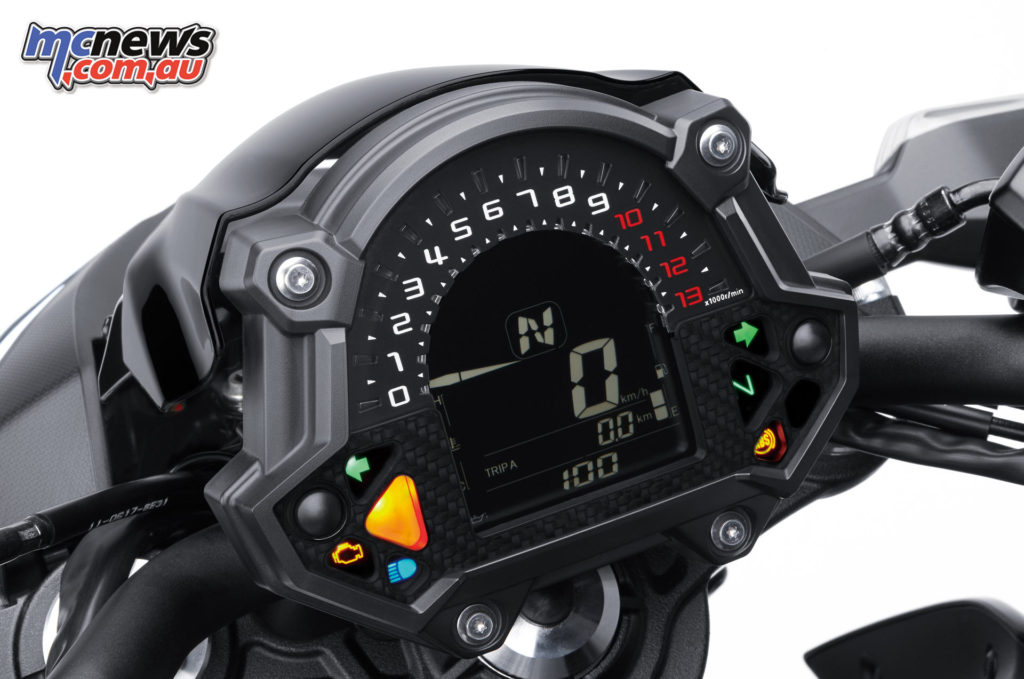
Little features like the differing instruments between models, integrated indicators on the Ninja and stylish indicators on the Z650, adjustable levers, slipper clutch, formed swing-arm and gear indicator all show the attention to detail that has gone into these offerings.

I’d certainly be happy riding either of these machines as a daily ride, capable of two-up, weekend scratching and even taking to the track – possibly for some advanced training if you’re a new rider!
Kawasaki also offer the Ninja 650 in an unrestricted form for the same RRP as the LAMS compliant Ninja 650L. The 2017 Ninja 650L is $9,999 RRP + ORC, the 2017 Z650L is $9,799 RRP + ORC. The KRT colour edition of the Ninja 650L attracts a further premium and is $10,299 RRP + ORC.
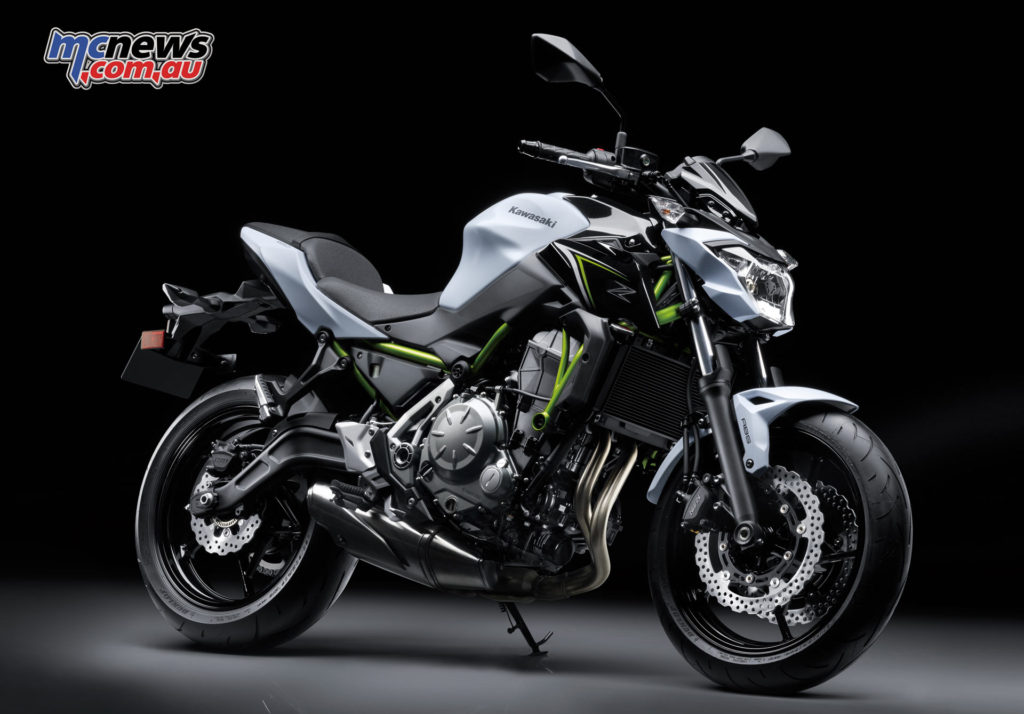
2017 Kawasaki Ninja 650L and Z650L specifications
- Engine – Liquid-cooled, 4-stroke Parallel Twin, 649cc, 83 x 60mm bore x stroke, 10.8:1 compression ratio, DOHC, eight-valve, dual 36mm throttle boddies with dual throttle valves
- Clutch – Slip and assist clutch, wet multi-disc
- Transmission – Six-speed
- Max claimed power – 37.8kW@8000rpm
- Max claimed torque – 59Nm@6500rpm
- Frame – High tensile trellis frame
- Rake – 24.5° (24° Z650L)
- Trail – 110mm (100mm Z650L)
- Front suspension – 41mm telescopic forks, non-adjustable, 125mm travel
- Rear suspension – Horizontal Back-link shock, preload adjustable, 130mm travel
- Front brakes – Dual 300mm semi-floating petal discs, dual piston calipers, Bosch 9.1M ABS
- Rear brakes – 220mm petal disc, single-piston caliper, Bosch 9.1M ABS
- Wheels & Tyres – Five-spoke wheels, 120/70 ZR17, 160/60 ZR17
- Dimensions:
- Wheelbase – 1410mm
- Seat height – 790mm
- Overall length – 2055mm
- Overall width – 740mm
- Overall height – 1135mm
- Fuel capacity – 15L
- Curb mass – 192kg (186kg Z650L)























